The Importance of Destructive Play for Babies and Toddlers
The importance of destructive play might not be obvious. It may look like your baby or toddler is simply destroying things or making a giant mess, but she is actually learning. Here are 5 things that my daughter loves to do that some people (her older brother) may find annoying.
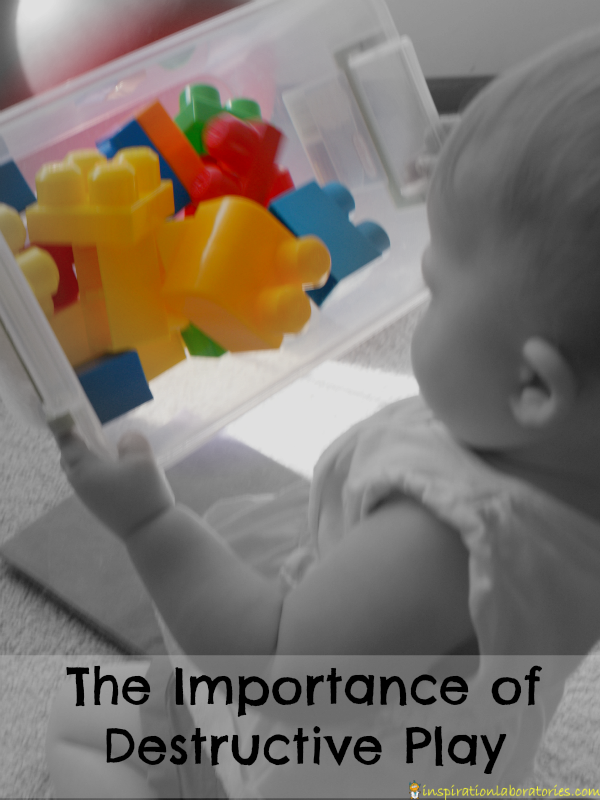
The Importance of Destructive Play for Babies and Toddlers
#1 Dumping Out Containers
This is the one that my daughter does the most. We have toys “organized” into bins and containers. She loves exploring what’s in the containers by dumping out the contents.
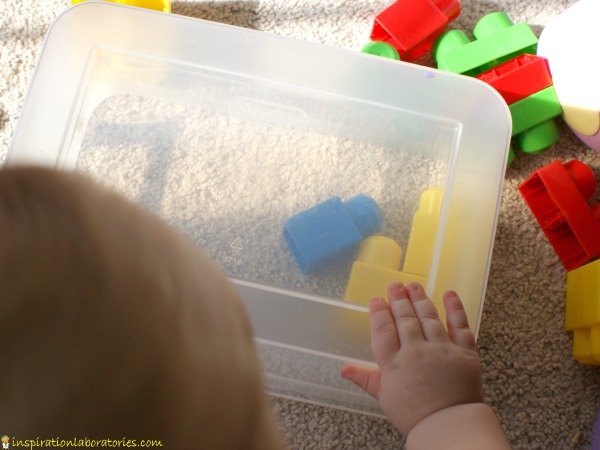
What They Are Learning:
- Cause and effect
- Object permanence – there are objects underneath the ones that we can see
- Gross motor skills – moving arms to empty the bin, bending over to reach the bin, etc.
- Fine motor skills – taking out toys one at a time
After dumping out the toys, my daughter will often explore the container – holding it in her hands, looking into it, talking into, or placing it on her head. She’s learning what she can do with this container.
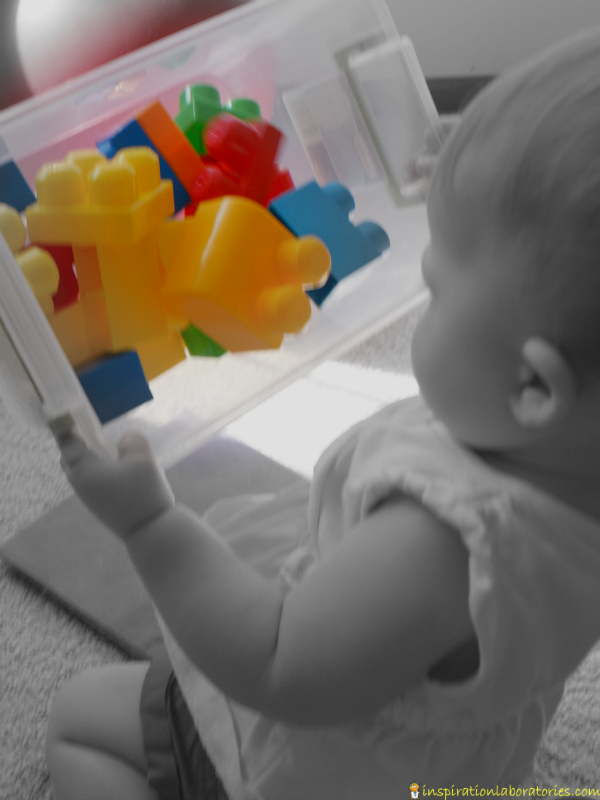
#2 Knocking Down Block Towers
Building block towers takes some skill, but knocking them down is just as fun to babies and toddlers. Build a tower for or with your child. Let her knock it down or take blocks off.
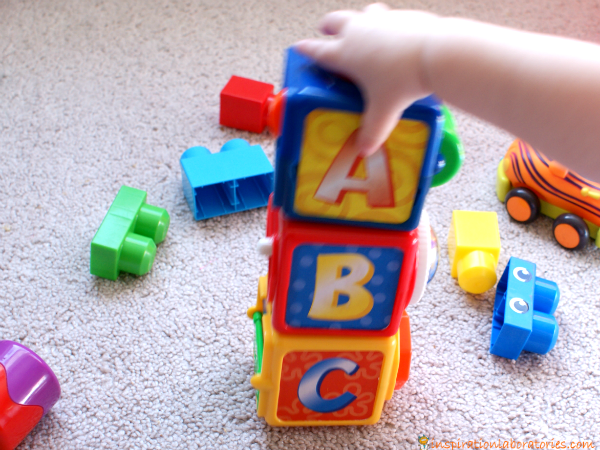
What They Are Learning:
- Cause and effect
- Fine motor skills
- Working together
Building towers is a way for older siblings to play with babies. My 5 year old loves building towers just so his sister can knock them down. Be sure to talk about this with your child before you just let the baby destroy the awesome tower he just built.
#3 Taking Apart DUPLO Creations
This is one you might not think about unless you have older children who love building with DUPLO. My son will be building something and his little sister will want to join in. Her version of playing with the DUPLO is by taking apart whatever Aiden has built. At first this upset him. Now he builds things just for her to take apart and then he builds something he wants to save.
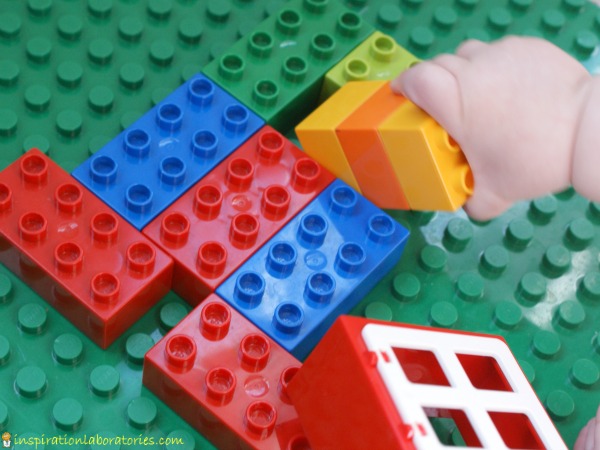
What They Are Learning:
- Fine motor skills are a big one here. It takes some dexterity to take apart those blocks.
- Problem solving – seeing how pieces fit together
- Making observations – babies and toddlers are little scientists learning about how their world works
#4 Removing Puzzle Pieces
When I first introduced the Melissa & Doug Jumbo Knob Wooden Farm Puzzle (affliate link), my daughter (then age 11 months) only wanted to take out the pieces. The knobs are perfect for little hands. She could easily grab the knob and remove the piece. I replaced the pieces and she took them out. We did this over and over again. Eventually (one day), she’ll put the pieces in the puzzle, too. I also asked her if she could pick up a certain animal. Can you get the cow, Lily? Where’s the pig?
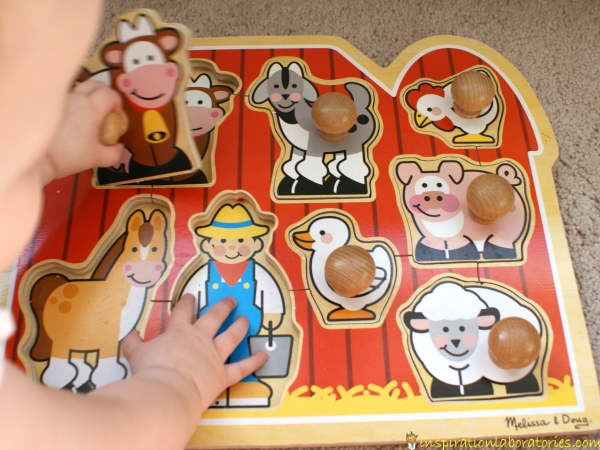
What They Are Learning:
- Fine motor skills
- Hand-eye coordination – working on grabbing specific puzzle pieces
- Spatial awareness – realizing where the puzzle pieces are in relation to the whole puzzle
- Problem solving – seeing how pieces fit together
Watch the video below for an example of how Lily plays with the puzzle.
#5 Dropping Toys
This one is not really as destructive as the other things I’ve listed, but it can be just as annoying. Dropping toys is a fun high chair game for baby. (Although you can play this game anywhere really. Do you have toys scattered all over the living room?)
Baby drops a toy or spoon or piece of food. Then, baby looks down to see where it went. You retrieve the toy and return it to baby or offer another piece of food. Baby drops it again and again looks for where it landed. You continue this game until you no longer want to play. (We often enlist the help of big brother to retrieve things his sister dropped. We called it “Aiden to the rescue.” He was usually happy to help.)
What They Are Learning:
- Object permanence – the toy is still there even if we can’t see it for a few seconds
- Cause and effect – what happens when I drop this?
What ways does your baby or toddler engage in destructive play? Can you see the benefits of what they are doing? Always remember to provide age-appropriate toys and supervise their play.
Do you subscribe to the Inspiration Laboratories newsletter? Each issue has exclusive hands-on science explorations for children, a recap of our latest activities, and special resources selected just for you!

Leave a Reply